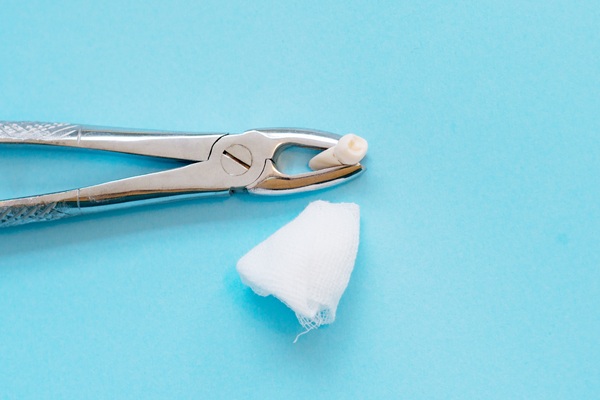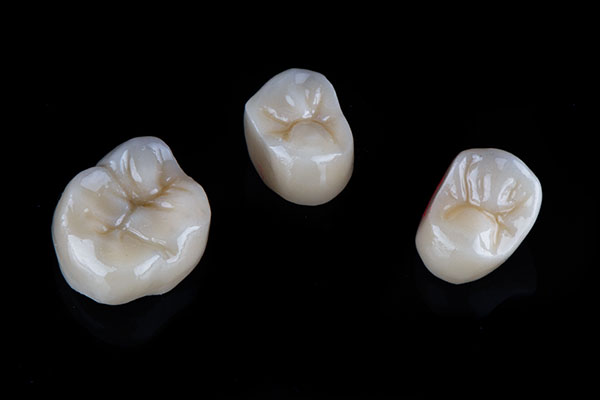Dental Filling Fell Out: What To Do

A dental filling falling out of a tooth may feel like a strange "pop" — or you may feel nothing at all upon dislodging the material from your enamel. Anyone who has lost a filling can attest to the panic of wondering what to do next. You may be surprised to know that while fillings are extremely durable, they are not designed to last forever. There are several common reasons for losing a filling and just as many ways to remedy the problem.
Why dental fillings fall out
You may have bitten into food that was hard to chew, or you may have eaten something sticky or crunchy that dislodged the filling from its place on the surface of your tooth. Consider the following reasons to trace your lost filling back to its source:
- You may have a new cavity that caused an area of decay where the filling was located.
- You may have bruxism (teeth grinding), which caused the filling to be dislodged by force.
- You may have an issue with the tooth itself.
- You may have eaten something that stuck to the filling and pulled it out.
The type of filling you had — composite, amalgam, or a harder metal such as gold — may give you some clues as to whether the loss of your dental filling was to be expected. Gold usually lasts the longest, while the lifespan of amalgam and composite fillings varies widely depending on your habits and how well you take care of them.
Steps to take when a dental filling falls out
The most important action you can take is to get in touch with your dentist to replace a lost filling as soon as possible. Your filling, as you likely know, is not just cosmetic: It protects the sensitive nerve endings inside your tooth. Take the steps below after you have lost a filling to avoid discomfort and unnecessary damage to the area.
1. Call your dentist
First and foremost, you should get in touch with your dentist to make an appointment to replace the filling. If your dentist is unable to see you on the day of the filling falling out, you may need to take additional measures to protect your tooth such as using dental wax to temporarily fill the hole.
It does not matter if your current dentist was the one who placed the filling or if the dentist has never seen you before as a patient. Any licensed general dentist should be qualified to replace a patient's lost filling.
2. Find the filling
Your next step should be to locate the filling and put it in a safe place (such as in a small plastic bag that can be easily located when it is time for your dental appointment). For the unlucky few who have swallowed their filling, this step may be impossible.
If you have accidentally ingested your filling, do not panic. Simply contact your dentist. He or she may recommend that you wait until the appointment and take no action. If the filling is large and you are in pain due to the sensitivity of your tooth, you may be advised to purchase some over-the-counter temporary filling material to put in its place while you wait to see your dentist.
3. Take steps to protect your tooth
Your dentist is likely familiar with the condition of your oral health and will be better able to advise you on the next steps to take to keep your tooth safe. You may try gargling with salt water to reduce inflammation and to remove little bits of food that may get stuck in the empty hole. Saltwater can also help remove and eradicate harmful bacteria from the area.
Try not to brush or floss the area too vigorously, and be sure to wear your nightguard if you struggle with nighttime bruxism. Your teeth grinding may make the area feel more sensitive if you do not wear your guard. Be sure to rinse your mouth after eating if the cavity is exposed if you cannot brush right away.
Conclusion
If you have lost a filling, do not delay in seeking care. The sooner you get your cavity refilled, the better you will feel. If you ignore a missing dental filling, this can mean further decay or infection for your exposed tooth.
Be sure to contact your dentist right away and follow his or her suggestions for keeping your exposed tooth safe in the meantime. Dental fillings are typically easy to replace, and the appointment should not take a long time out of your day.
Request an appointment here: https://serenitydentalspa.com or call Serenity Dental Spa at (415) 376-6196 for an appointment in our San Francisco office.
Check out what others are saying about our dental services on Yelp: Composite Fillings in San Francisco, CA.
Related Posts
When individuals experience cavities and other problems that affect their teeth, dentists use a dental filling to repair and restore them. This helps preserve damaged teeth and prevents their loss. Dental fillings are the most common type of dental work: according to the Centers for Disease Control and Prevention, over 90% of Americans have had…
Gum recession is one of the many conditions that can be treated with the use of composite fillings. Receding gums can reduce confidence in the appearance of a person's smile and increase the risk of tooth sensitivity and decay. Fortunately, with treatment, this condition can often be stopped or reversed.Gum recession occurs when the gums…
A dental filling is most often used to treat cavities. If a patient has a cavity, the dentist removes decay from the tooth and fills the area. Likewise, the filling material can repair cracked and broken teeth. There are several materials available for dental fillings. Materials include porcelain, gold, silver amalgam, and composite resin.You may…
Using dental fillings to treat cavities is one of the most common types of routine dental care. The American Dental Association reports that approximately 91% of adults will experience at least one cavity in their permanent teeth at some point in time. Fortunately, the high demand for this type of dental work has led to…


